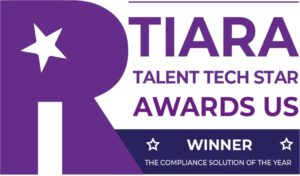Undoubtedly, there is a significant amount of strength in organizational diversity. Research from the Harvard Business Review shows that diverse businesses are 45% more likely to report growth in market share and 70% more likely to report capturing a new market.
When people feel welcome at work and valued for who they are, they’re often more likely to feel comfortable sharing innovative ideas that can drive business growth.
As you consider your objectives for the next quarter and the upcoming year, have you made diversity a part of your strategy for achieving them? If not, it’s worth considering how you can create a more inclusive environment by reviewing your policies, building new initiatives, retooling your hiring practices, and strengthening a culture of belonging.
Here are a few actionable tips you can implement now to achieve those goals and ensure all employees have a chance to thrive.
Review and Revise Current Policies
Creating an inclusive environment in your workplace starts with reviewing policies intended to support that type of culture. It’s important to ensure that your employee handbook includes a thorough explanation of policies related to harassment and discrimination so that all employees understand their rights and responsibilities under federal law.
It’s also crucial to review and revise diversity and inclusion policies related to hiring and training to ensure that they are compliant with the law and reflect your current company values.
Build New Initiatives and Campaigns
Next, you’ll need to consider how your policies and practices affect your employees. Consider hosting awareness campaigns that educate your workforce on the importance of diversity and inclusion and creating a workplace where everyone feels valued and respected.
These campaigns should include structured opportunities to foster discussions on diversity as well as avenues for employees to share experiences to increase understanding.
Commit to Inclusivity in Hiring
Your hiring practices should reflect the commitment you have made to building a more inclusive environment in your office. One way to retool hiring in your organization is to use blind recruitment, which removes identifying information from applications and resumes to reduce the possibility of bias in the selection process and put the focus back on candidates’ skills and qualifications.
Additionally, it’s a good idea to pursue and collaborate with diverse talent pools as well as seek out ways to minimize bias in interviews, such as conducting structured interviews and involving multiple panelists.
Build a Culture of Inclusivity
Ultimately, your workplace culture will play a significant role in determining whether employees feel a sense of belonging. Employee resource groups, which are voluntary, employee-led groups built around shared characteristics, interests, or identities, can help you achieve this goal.
Survey employees to see which diversity aspects they may be interested in developing ERGs around, and provide space and resources to help them connect and share experiences.
In addition to creating spaces for open dialogue, it’s essential to regularly collect employee feedback through surveys or meetings. These will help you understand what is currently working and what needs to be done to improve initiatives.
Ensure Cultural Competence Among Your Team
It’s important to get training for yourself and your team to ensure they know how to establish and maintain a culture of belonging. In addition to cultural competence training, you may want to seek out additional information about unconscious bias and allyship.
These trainings are especially important for leadership development, as your leadership team will set the tone for the rest of the organization. If you have specific diversity and inclusion goals, you may want to incorporate them into your performance management system to ensure that everyone in your organization is working toward meeting them.
Set Measurable Goals and Objectives
An inclusive environment won’t just happen on its own. You must intentionally work toward it. Setting measurable diversity and inclusion objectives can help you do just that. You may want to track metrics, such as workforce demographics, leadership representation, promotion rates, and pay equity, to build a fair workplace for all.
As your initiatives progress, make sure to track your progress to ensure you’re still moving toward your goals. Ensure that you have a system for holding leadership accountable while celebrating achievements and addressing areas for growth.
Support Employee Well-Being and Mental Health
It’s crucial that you are able to recognize the link between mental health and inclusion. Data from Gallup indicates that over half of employees who have experienced discrimination at work also report that they are not thriving in their workplaces. Offer resources to support the well-being of all employees, especially those who may be from underrepresented groups.
Create an Inclusive Workplace for All Employees
Building an inclusive workplace where everyone feels welcome can have so many benefits for your organization. Not only can it improve employee morale and boost mental and physical well-being, but it can also increase engagement, productivity, and your business’s bottom line.
Still, as the regulatory landscape surrounding diversity and inclusion initiatives continues to shift, it’s critical to ensure care when revising your policies or launching new initiatives. If you aren’t quite sure how to navigate this uncharted territory, let VirgilHR be your guide.
Our platform puts automated employment and labor law guidance at your fingertips, ensuring you have the information you need to build a culture of inclusivity without sacrificing compliance. Schedule a demo today to see how you can establish sound policies that make everyone feel welcome in your organization.
Sources:
1. https://inside.nku.edu/content/dam/inclusive/docs/HBR.HOW%20DIVERSITY%20DRIVES%20INNOVATION.pdf
2. https://www.gallup.com/workplace/349865/understanding-effects-discrimination-workplace.aspx






